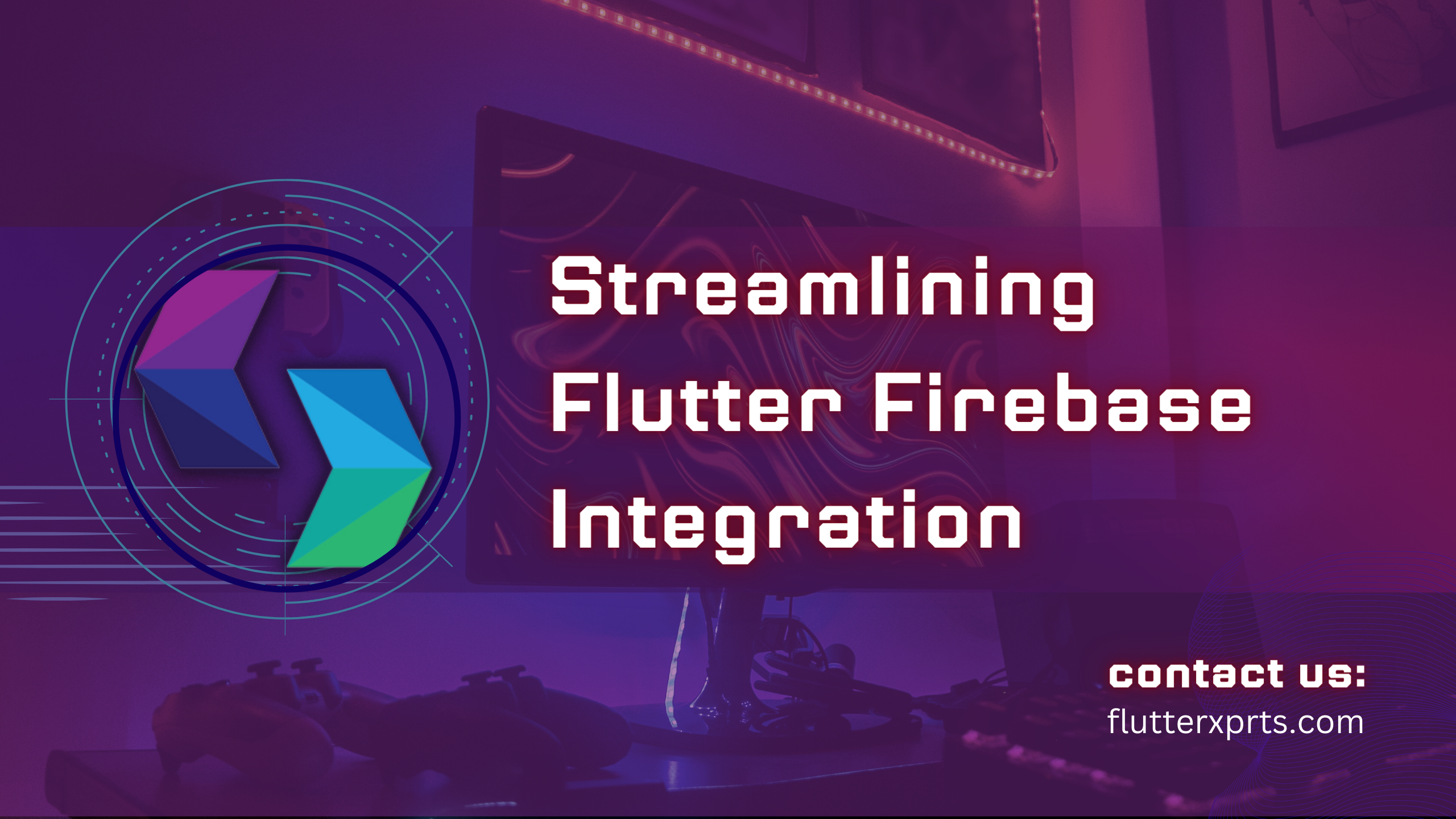Effortless Integration of Flutter with Firebase: A Comprehensive Tutorial
When it comes to building powerful and dynamic mobile applications, integrating Flutter with Firebase can be a game-changer. Flutter, Google’s open-source UI framework, and Firebase, Google’s mobile and web application development platform, can work seamlessly together to create feature-rich apps.
Setting Up Firebase for Your Flutter Project Before diving into integration, you need to set up Firebase for your Flutter project. Follow these steps:
- Create a new Firebase project.
- Add your Flutter app to the Firebase project.
- Download and add the Firebase configuration files to your Flutter app.
// Example: Adding Firebase configuration in your Flutter app
import 'package:flutter/material.dart';
import 'package:firebase_core/firebase_core.dart';
void main() async {
WidgetsFlutterBinding.ensureInitialized();
await Firebase.initializeApp(); // Initialize Firebase
runApp(MyApp());
}
Authenticating Users with Firebase Authentication User authentication is a crucial aspect of many apps. With Firebase Authentication, you can easily integrate authentication methods like email, Google, and more. Here’s how:
- Set up Firebase Authentication in your project.
- Implement email and password authentication.
- Integrate social media logins using Firebase.
// Example: Implementing email and password authentication
import 'package:firebase_auth/firebase_auth.dart';
class AuthService {
final FirebaseAuth _auth = FirebaseAuth.instance;
// Sign in with email and password
Future<UserCredential> signInWithEmailAndPassword(String email, String password) async {
try {
return await _auth.signInWithEmailAndPassword(email: email, password: password);
} catch (e) {
// Handle authentication errors
print("Error: $e");
return null;
}
}
// Other authentication methods...
}
Storing and Retrieving Data with Cloud Firestore Firebase’s Cloud Firestore is a NoSQL database that enables real-time syncing of data across devices. Here’s how to use it:
- Initialize Cloud Firestore in your Flutter app.
- Create, read, update, and delete data in Firestore.
- Implement real-time data synchronization with listeners.
// Example: Reading data from Firestore
import 'package:cloud_firestore/cloud_firestore.dart';
class FirestoreService {
final FirebaseFirestore _firestore = FirebaseFirestore.instance;
// Retrieve data from a Firestore collection
Stream<QuerySnapshot> getData() {
return _firestore.collection('data').snapshots();
}
// Other Firestore operations...
}
Real-time Communication with Firebase Realtime Database Firebase Realtime Database offers real-time synchronization and data storage. Learn how to use it:
- Integrate Firebase Realtime Database into your app.
- Structure your data using JSON-like structures.
- Implement real-time updates and data synchronization.
// Example: Real-time updates using Firebase Realtime Database
import 'package:firebase_database/firebase_database.dart';
class RealtimeDatabaseService {
final FirebaseDatabase _database = FirebaseDatabase.instance;
// Listen for real-time updates from a database reference
void listenForUpdates() {
_database.reference().child('messages').onValue.listen((event) {
// Handle real-time updates
DataSnapshot snapshot = event.snapshot;
print('Received update: ${snapshot.value}');
});
}
// Other Realtime Database operations...
}
Handling User Authentication State in Flutter Manage user authentication state effectively using Flutter and Firebase:
- Utilize Firebase Authentication state management.
- Show different screens based on user authentication status.
- Implement sign-out functionality.
// Example: User authentication state management
import 'package:firebase_auth/firebase_auth.dart';
import 'package:flutter/material.dart';
class AuthenticationWrapper extends StatelessWidget {
final FirebaseAuth _auth = FirebaseAuth.instance;
@override
Widget build(BuildContext context) {
if (_auth.currentUser == null) {
return LoginScreen();
} else {
return HomeScreen();
}
}
}
// Other authentication-related UI components...
Implementing Cloud Storage for File Uploads in Flutter Firebase Cloud Storage allows seamless file uploading and downloading. Here’s how to implement it:
- Set up Firebase Cloud Storage for your app.
- Enable users to upload files to Cloud Storage.
- Retrieve and display files from Cloud Storage.
// Example: Uploading a file to Firebase Cloud Storage
import 'package:firebase_storage/firebase_storage.dart';
class CloudStorageService {
final FirebaseStorage _storage = FirebaseStorage.instance;
// Upload a file to Cloud Storage
Future<String> uploadFile(String filePath) async {
try {
Reference storageReference = _storage.ref().child('uploads/file.jpg');
UploadTask uploadTask = storageReference.putFile(File(filePath));
TaskSnapshot snapshot = await uploadTask;
return await snapshot.ref.getDownloadURL();
} catch (e) {
print("Error uploading file: $e");
return null;
}
}
// Other Cloud Storage operations...
}
Enhancing User Experience with Firebase Cloud Messaging Firebase Cloud Messaging enables you to send notifications to users. Learn how to integrate it:
- Configure Firebase Cloud Messaging for your project.
- Implement push notifications in your Flutter app.
- Handle notifications and user interactions.
// Example: Receiving and handling push notifications
import 'package:firebase_messaging/firebase_messaging.dart';
import 'package:flutter/material.dart';
class PushNotificationService {
final FirebaseMessaging _firebaseMessaging = FirebaseMessaging();
// Configure Firebase Cloud Messaging
void configureMessaging() {
_firebaseMessaging.configure(
onMessage: (Map<String, dynamic> message) async {
// Handle foreground notifications
print("Foreground Notification: $message");
},
onLaunch: (Map<String, dynamic> message) async {
// Handle notification when app is launched from a terminated state
print("Launch Notification: $message");
},
onResume: (Map<String, dynamic> message) async {
// Handle notification when app is resumed from background
print("Resume Notification: $message");
},
);
}
// Other Cloud Messaging operations...
}
Monitoring and Analytics with Firebase in Flutter Firebase offers powerful monitoring and analytics tools. Here’s how to make use of them:
- Integrate Firebase Analytics into your app.
- Track user behavior and app performance.
- Use analytics data to make informed decisions.
// Example: Integrating Firebase Analytics
import 'package:firebase_analytics/firebase_analytics.dart';
class AnalyticsService {
final FirebaseAnalytics _analytics = FirebaseAnalytics();
// Log a custom event
Future<void> logEvent(String eventName, Map<String, dynamic> parameters) async {
await _analytics.logEvent(name: eventName, parameters: parameters);
}
// Other Analytics operations...
}
Conclusion and Future Possibilities Integrating Flutter with Firebase opens up a world of possibilities for creating feature-rich mobile applications. From user authentication to real-time data syncing, Firebase’s suite of tools complements Flutter’s capabilities perfectly.
FAQs
- Q: Is Flutter compatible with other backends besides Firebase? A: Yes, Flutter can integrate with various backends, but Firebase offers seamless integration and a wide range of features.
- Q: Can I use Firebase with platforms other than Flutter? A: Yes, Firebase supports multiple platforms, including Android, iOS, and web, making it versatile for various app development needs.


